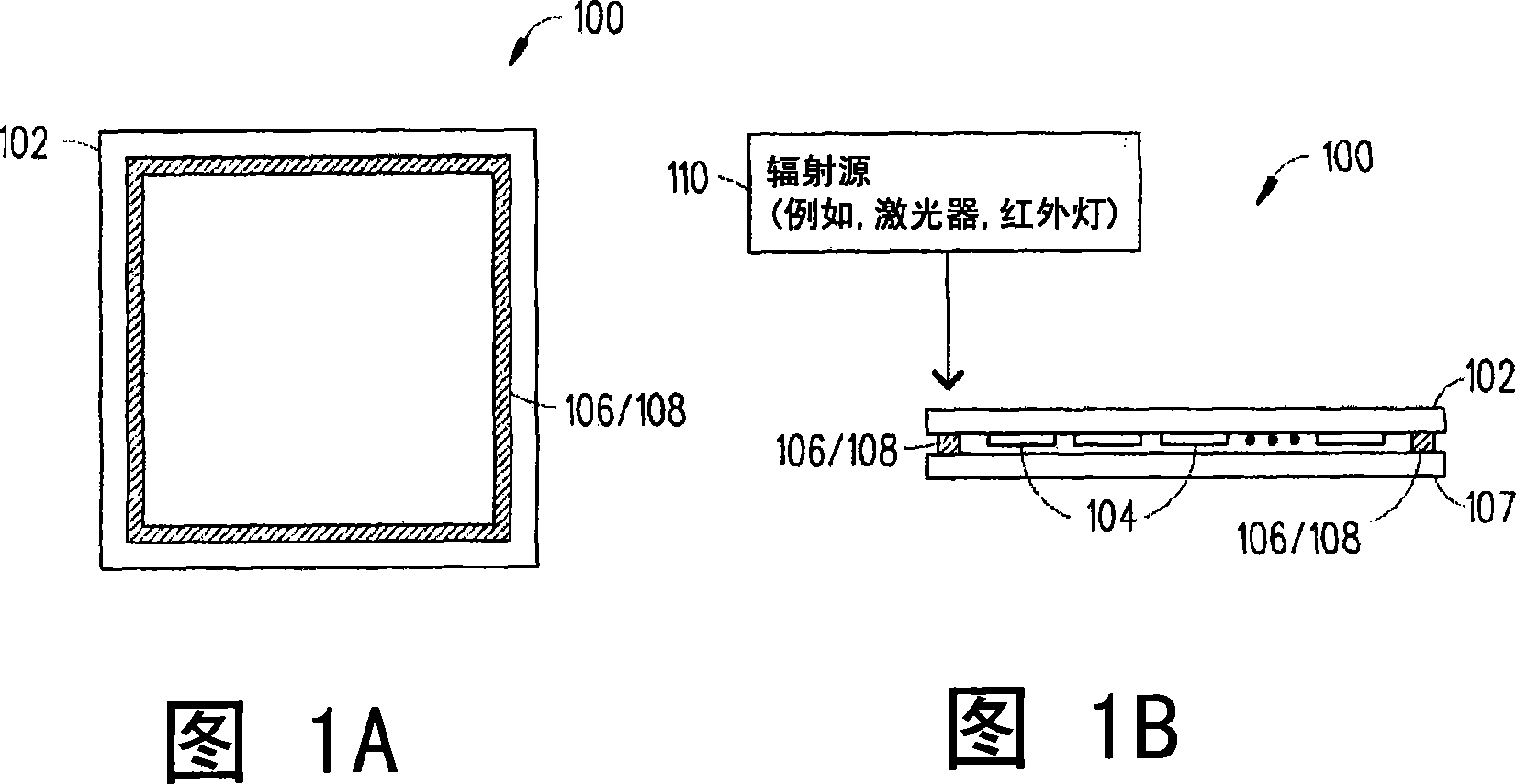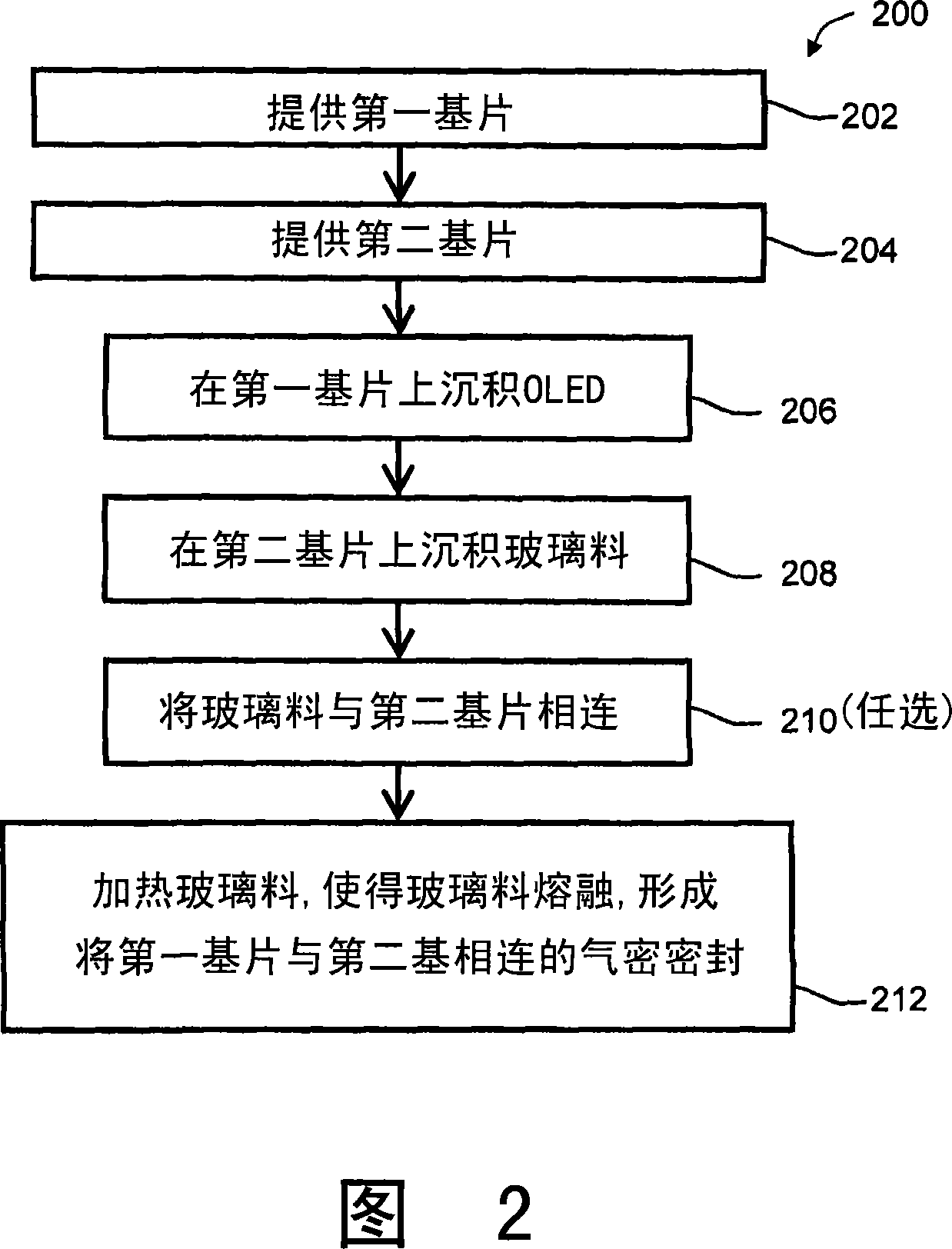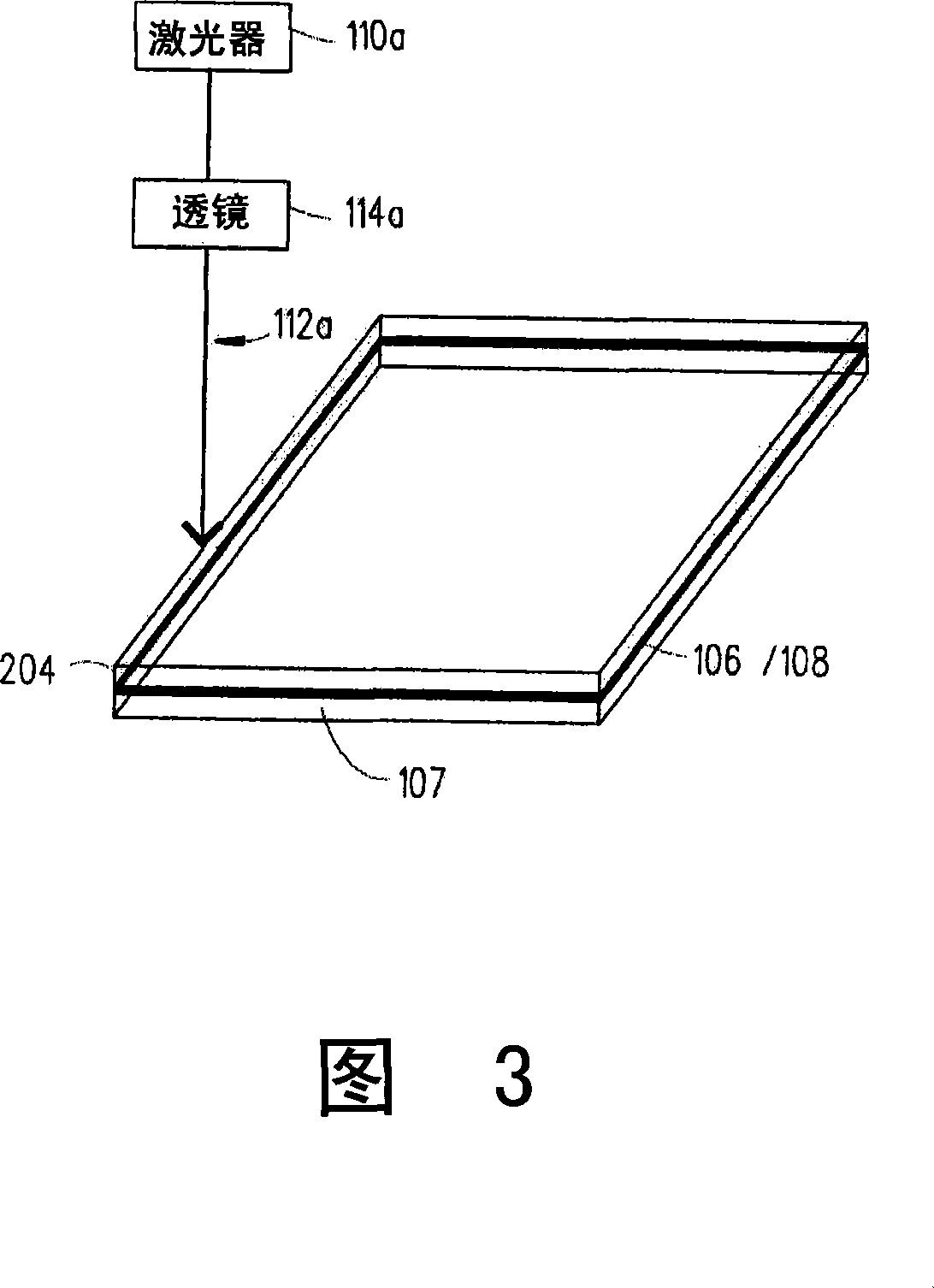Boro-silicate glass frits for hermetic sealing of light emitting device displays
A borosilicate glass and frit technology, which is used in electrical components, electrical solid devices, glass molding, etc.
- Summary
- Abstract
- Description
- Claims
- Application Information
AI Technical Summary
Problems solved by technology
Method used
Image
Examples
preparation example Construction
[0081] Preparation and application of glass frit
[0082] Glass frits are formed by combining the desired base and absorbing components, heating the mixture to a temperature sufficient to melt the components (e.g., about 1,550°C), mixing the materials, and subsequently cooling the resulting mixture glass part. The resulting composition can be fractured by subjecting it to thermal shock by pouring cold water or liquid nitrogen on it. If necessary, the broken pieces can be further crushed and ground to the desired particle size. In one aspect, the fractured fragments are crushed to a size of about 325 mesh, followed by wet milling to an average particle size of about 1.9 microns.
[0083] The frit paste is then formulated for dispensing onto the substrate by mixing the glass portion of the frit with other materials such as a paste binder and / or a paste filler for handling and dispensing the frit paste . The pasty binder and / or the pasty filler used to prepare the frit paste ...
Embodiment 1
[0100] Example 1: Glass frit composition of the present invention
[0101] In a first example, various frit compositions including oxide combinations were prepared. The specific composition of the glass portion of each sample of the present invention is listed in Table 2 below. All amounts detailed in Table 2 are expressed as mole %.
[0102] Table 2: Glass frit compositions of the present invention (glass fraction)
[0103] components
Embodiment 2
[0104] Embodiment 2: Preparation of glass frit powder of the present invention
[0105] In a second example, the components of Sample A of the present invention described in Table 2 above were combined. The resulting mixture was heated to about 1,550° C. for about 6 hours to melt the components.
[0106] This hot mixture is then broken up by pouring it into cold water. The broken pieces were then milled to 325 mesh and then wet milled to a particle size of approximately 1.9 microns.
PUM
| Property | Measurement | Unit |
|---|---|---|
| softening point | aaaaa | aaaaa |
| width | aaaaa | aaaaa |
| thickness | aaaaa | aaaaa |
Abstract
Description
Claims
Application Information
 Login to View More
Login to View More - R&D
- Intellectual Property
- Life Sciences
- Materials
- Tech Scout
- Unparalleled Data Quality
- Higher Quality Content
- 60% Fewer Hallucinations
Browse by: Latest US Patents, China's latest patents, Technical Efficacy Thesaurus, Application Domain, Technology Topic, Popular Technical Reports.
© 2025 PatSnap. All rights reserved.Legal|Privacy policy|Modern Slavery Act Transparency Statement|Sitemap|About US| Contact US: help@patsnap.com



